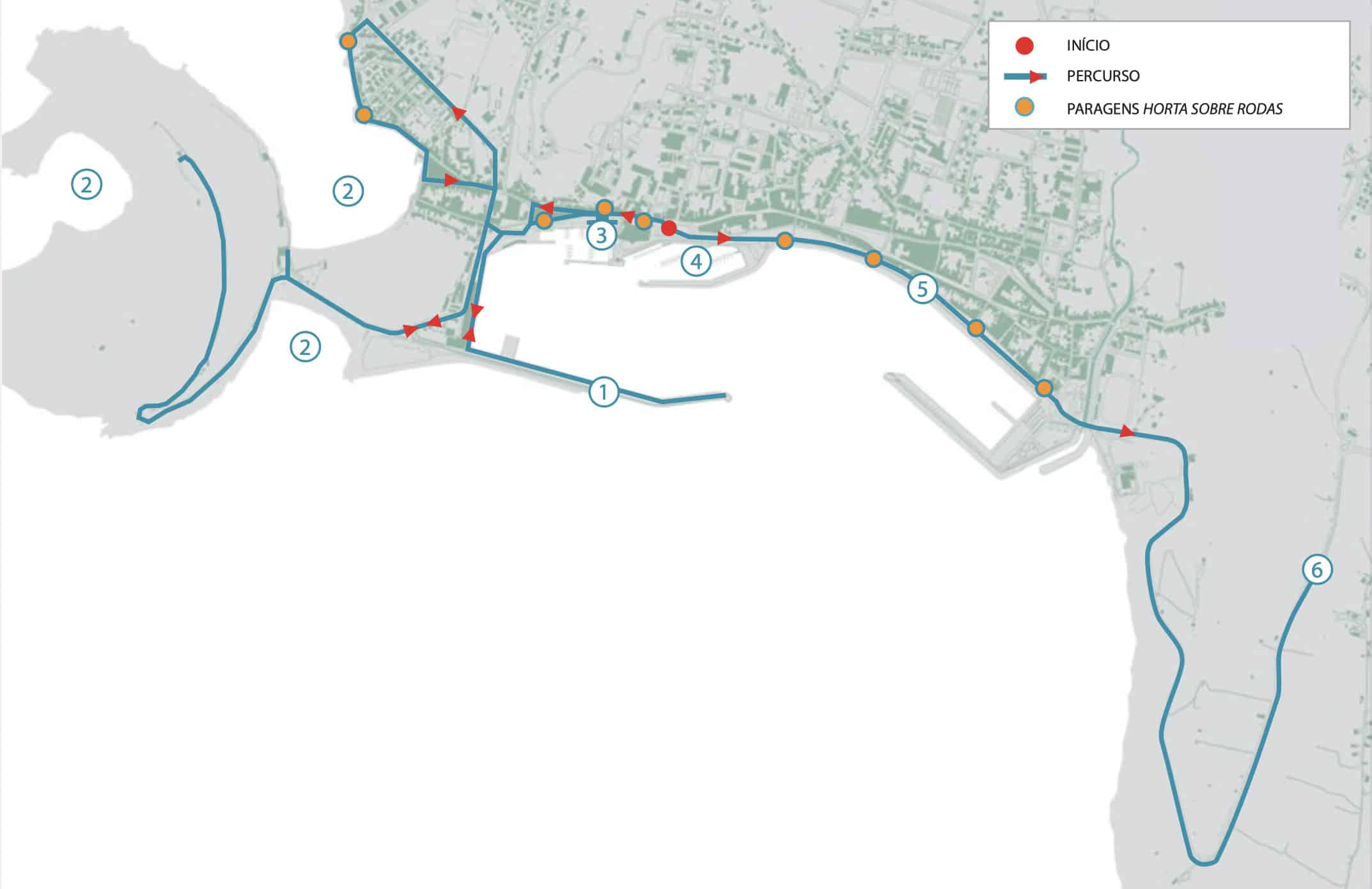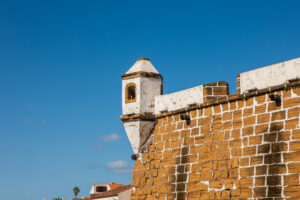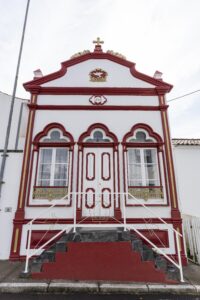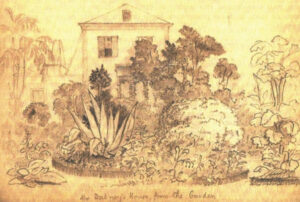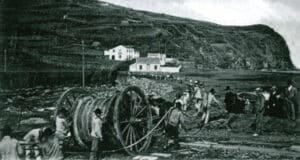
Horta by the seaside – The scenic haven
This itinerary allows you to appreciate the sea alongside the shoreline of the city, passing through the most fascinating spots of Horta’s seaside and through the protected landscape of Faial’s Nature Park.
The natural topography of this part of the island provides a sense of safety, which the city has benefited from. Horta is flanked by two hills: the Espalamaca and Monte da Guia, shaping one of the most secure bays of the Azores and one of the most beautiful in the world. These are natural viewpoints, from where you can enjoy different panoramic views from the two opposite hills, facing the city, the bay, and the sea.
The magnificent view from the city is defined by Pico Mountain and by the island of São Jorge in the background.
Throughout its existence, Horta has been a crucial stop for transatlantic navigation, being a reference for international sailing today, along with its famous painted marina.
- Horta
- Average duration of 4 hours
- Some locations are subject to opening hours.
- Low difficulty level
1. Dock
The arrival of passengers and goods in Horta took place in front of the village, on the sand beach that extended up to the fort, Castelo de Santa Cruz. In 1825, a small dock was built in that site, having been damaged by a ship in the following year, and ending up being completely destroyed by a storm in 1849.
Over the 19th century, it became imperative to build an artificial harbour in the bay, given the importance of Horta as trading post for Pico wine and oranges, and a restocking point for steam ships and American whalers.
Consequently, the construction of the dock started in 1876 and was only completed in the first decade of 1900.


2. Protected Landscape of Mount of Guia and Porto Pim’s Bay
The protected landscape of the Monte da Guia is located to the south of Horta and connected to the city by an isthmus.
Monte da Guia (145 m) is an example of an old volcanic cone, formed by several layers of tuff. Its crater, Caldeirinhas, is partially flooded by the sea. Some endemic plants of the Azores grow here, such as the Azorean Heather (Erica azorica), the Azorean Candleberry Tree (Myrica faya) and the Azorean Juniper (Juniperus brevifolia). Here you can also find bird species such as the Common tern (Sterna hirundo) and the Yellow-legged Gull (Larus michahellis).
It is named after Nossa Senhora da Guia, patron saint of fishermen, with a chapel in its honour located on the hilltop (built in 1943, since the original chapel from the 17th century was destroyed in 1941). Monte da Guia offers a great view over the Caldeirinhas, the incredible bay of Porto Pim, the city, the islands of Pico and São Jorge, and the horizon.
Monte Queimado (89 m) is framed by two bays: to the east, by the bay of Entre-os-Montes, a protected area ideal for snorkelling, and to the west, by the Praia de Porto Pim, one of the largest sand beaches of the island and an excellent bathing area.
In this area it is possible to spot many places of interest, being one of the oldest clusters of the city. On the northern slope, there is an old military artillery battery. Facing Porto Pim Bay, we can find the old whaling station and the memory of the old summer home and wine cellar of the Dabneys, both recently rebuilt to house, respectively, the headquarters of Faial’s Nature Park and the Dabney Family Museum Centre. In the area connecting the two hills, we can see the structures for the second group of submarine cables, landed between 1923 and 1928. Lastly, bypassing the bay to the north, we find the military defence system of Porto Pim, from the times of the pirate and privateer attacks, dating back to the 17th century.
3. Clube Naval da Horta
The club was officially inaugurated in 1947, being the biggest institution in the development of nautical activities in the city to this day. Here you can try sailing or rowing, on sailing boats (dinghies) or whaling boats, as well as canoeing, sport fishing, among other water activities.
In addition to sports, emphasizing their significant support for sailing activities, it also plays a key role in the organisation of international regattas, contributing to a worldwide projection of Horta, by making it part of the route of the largest international nautical events.


4. Marina
5. Avenida
It consists of a seawall skirting the city, separating the land from the sea, where there used to be a large sand beach.
In 1876, a mole was built in order to shelter the buildings of Rua do Mar from the waves of the sea that continuously struck that street. The main avenue was built in cobblestone, made from limestone and basalt, and opened to car traffic in 1964. Today it is one of the main arterial roads of the city.
From the present elements we emphasize the bust of the local poet Osório Goulart, and, to the south, a memorial dedicated to the men from Faial who died during the Portuguese Colonial War.
Every year, Semana do Mar (The Week of the Sea) is held here, a nautical festival which takes place during the first week of August.


6. Nossa Senhora da Conceição Monument
This monument is located in the highest point of Espalamaca, with an approximate altitude of 28 m, featuring a marble statue of Nossa Senhora da Conceição, after whom this parish is named.
Espalamaca is a natural viewpoint with an extraordinary panoramic view: to the south, the city of Horta, Monte da Guia and Monte Queimado in the back; to the west, the Monte Carneiro and Cabeço Gordo (where Caldeira is located); finally on the opposite side, facing north, the fantastic Praia de Almoxarife. This is also a wonderful place to contemplate Pico and São Jorge islands, where, with good weather, it is also possible to spot Graciosa’s silhouette.
Facing the city, there is a monument built in honour of Nossa Senhora da Conceição (Our Lady of the Conception). It dates back to the early 1960s and was designed by the Azorean architect Eduardo Read Teixeira. It was only completed in 1973, after a storm destroyed it, in 1969.
